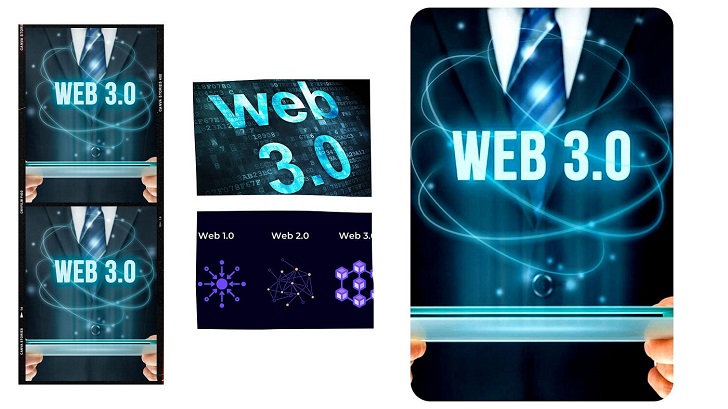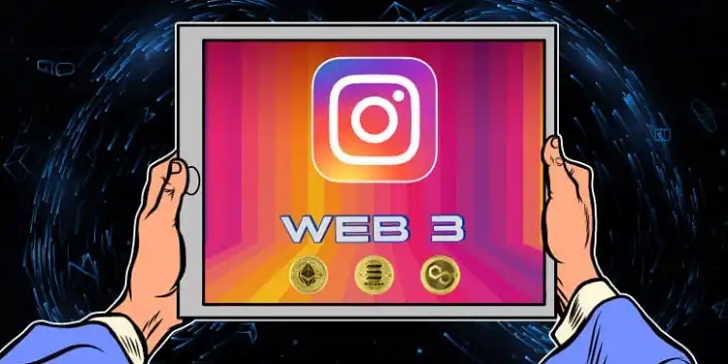In the ever-evolving landscape of the internet, Web3 has emerged as a groundbreaking concept that promises to reshape the digital world as we know it. Web3 represents a significant departure from its predecessor, Web2, and is poised to revolutionize how we interact with technology, data, and the internet.
In this article, we will explore the core concepts of Web3, its key components, and its potential impact on various aspects of our lives.
Web2: The Status Quo
Before delving into Web3, it's essential to understand the context of its predecessor, Web2. Web2, or the second generation of the internet, is characterized by centralized platforms, where a handful of tech giants like Facebook, Google, and Amazon control vast amounts of user data and dictate the rules of online engagement. Users willingly contribute their data, content, and time to these platforms in exchange for services, such as social networking, search, and e-commerce.

Pixabay/ Pexels | Web1 was read-only, Web2 is read-write, and Web3 will be read-write-own
While Web2 has brought unprecedented convenience and connectivity to our lives, it has also raised concerns about data privacy, censorship, and the concentration of power. Web3 aims to address these issues and introduce a more decentralized and user-centric approach to the Internet.
Understanding Web3: A Decentralized Paradigm
At its core, Web3 represents a paradigm shift from centralized control to decentralized governance and ownership. It leverages blockchain and other decentralized technologies to create a more equitable and user-driven internet ecosystem. Here are some key components of Web3:
Blockchain Technology
At the heart of Web3 is blockchain technology, which provides a secure and transparent way to record and verify transactions and data. Blockchains are distributed ledgers maintained by a network of nodes, ensuring data integrity and reducing the risk of manipulation or censorship.
Smart Contracts
Web3 introduces smart contracts, self-executing contracts with the terms of the agreement directly written into code. These contracts automate processes, eliminate intermediaries, and ensure trust among parties, making transactions more efficient and secure.

Business News/ Instagram | Web3 can be described as read/write/own, where users actively govern blockchain-based networks through cryptocurrency tokens
Decentralized Applications (dApps)
Web3 encourages the development of decentralized applications that run on blockchain networks. These dApps operate without a central authority, allowing users to retain control of their data and interact directly with each other.
Digital Ownership
Web3 enables true digital ownership, allowing users to control their data, digital assets, and online identity. Blockchain's cryptographic principles facilitate this ownership, granting users the keys to their online presence.
Web3's Impact on Industries
Web3 has the potential to disrupt various industries, ushering in new possibilities and challenges:
- Finance: Web3 is reshaping the financial industry with decentralized finance (DeFi) platforms. DeFi enables peer-to-peer lending, borrowing, and trading without intermediaries, democratizing access to financial services.
- Art and Entertainment: Artists and creators can tokenize their work on blockchain, ensuring fair compensation and rights protection. NFTs (Non-Fungible Tokens) have gained prominence as unique digital assets representing ownership of digital or physical items.
- Data Privacy: With Web3, users can control their data and grant access on their terms. Personal data can be securely shared with apps or services without relinquishing control to centralized platforms.
- Supply Chain: Web3's transparency and traceability can revolutionize supply chain management, ensuring the authenticity and origin of products.
- Gaming: Blockchain-based gaming platforms enable players to own in-game assets and trade them across different games and platforms.
- Social Networks: Decentralized social networks are emerging, giving users greater control over their content and interactions reducing centralised platforms' influence.

Business News/ Instagram | The future of the web is bright, as Web3 continues to evolve and improve its infrastructure
Challenges and Considerations
While Web3 holds great promise, it also faces significant challenges:
Scalability
Blockchain networks must overcome scalability issues to handle mass adoption and transaction volumes effectively.
Regulation
Governments are still grappling with how to regulate decentralized technologies, which can lead to uncertainty and legal challenges.
User Experience
The transition to Web3 should be seamless and user-friendly to encourage adoption among non-technical users.
Energy Consumption
Some blockchain networks consume substantial energy, raising environmental concerns that must be addressed.
The Road Ahead
Web3 represents an exciting vision for the future of the internet, emphasizing decentralization, user empowerment, and data ownership. While challenges remain, the potential benefits are substantial, touching various aspects of our lives, from finance and entertainment to privacy and security.
As we continue navigating this evolving landscape's complexities, Web3 offers a glimpse into a more democratic and user-centric digital world. Whether or not it realizes its full potential will depend on how well it addresses these challenges and how society adapts to this transformative shift in the digital realm.








